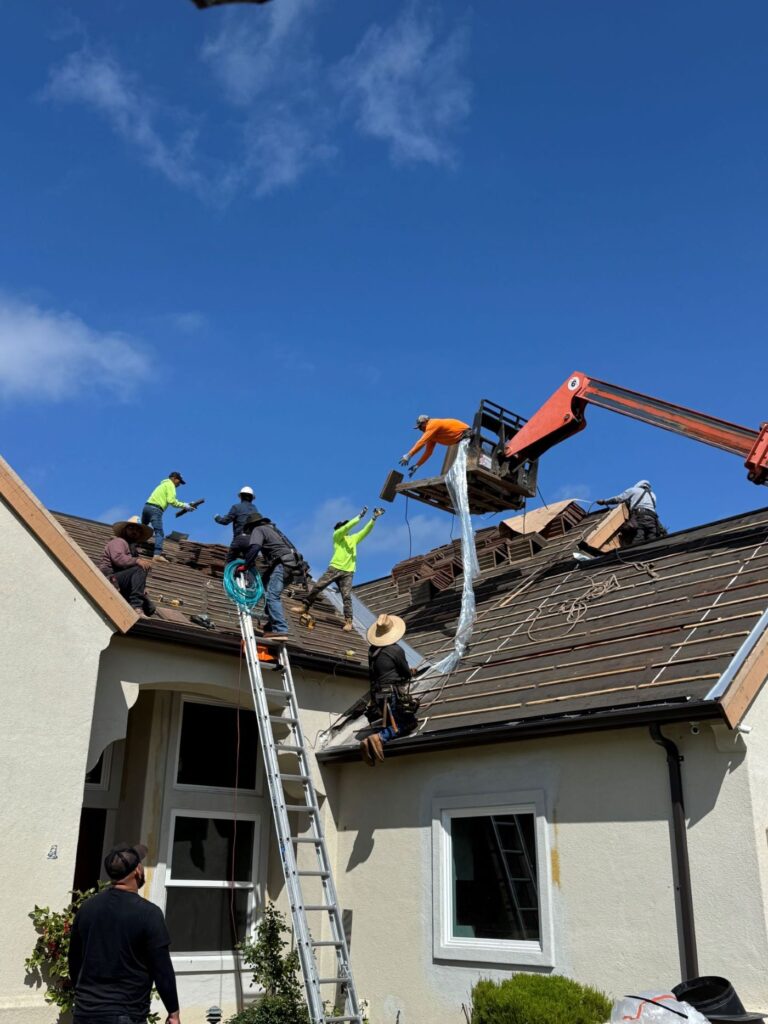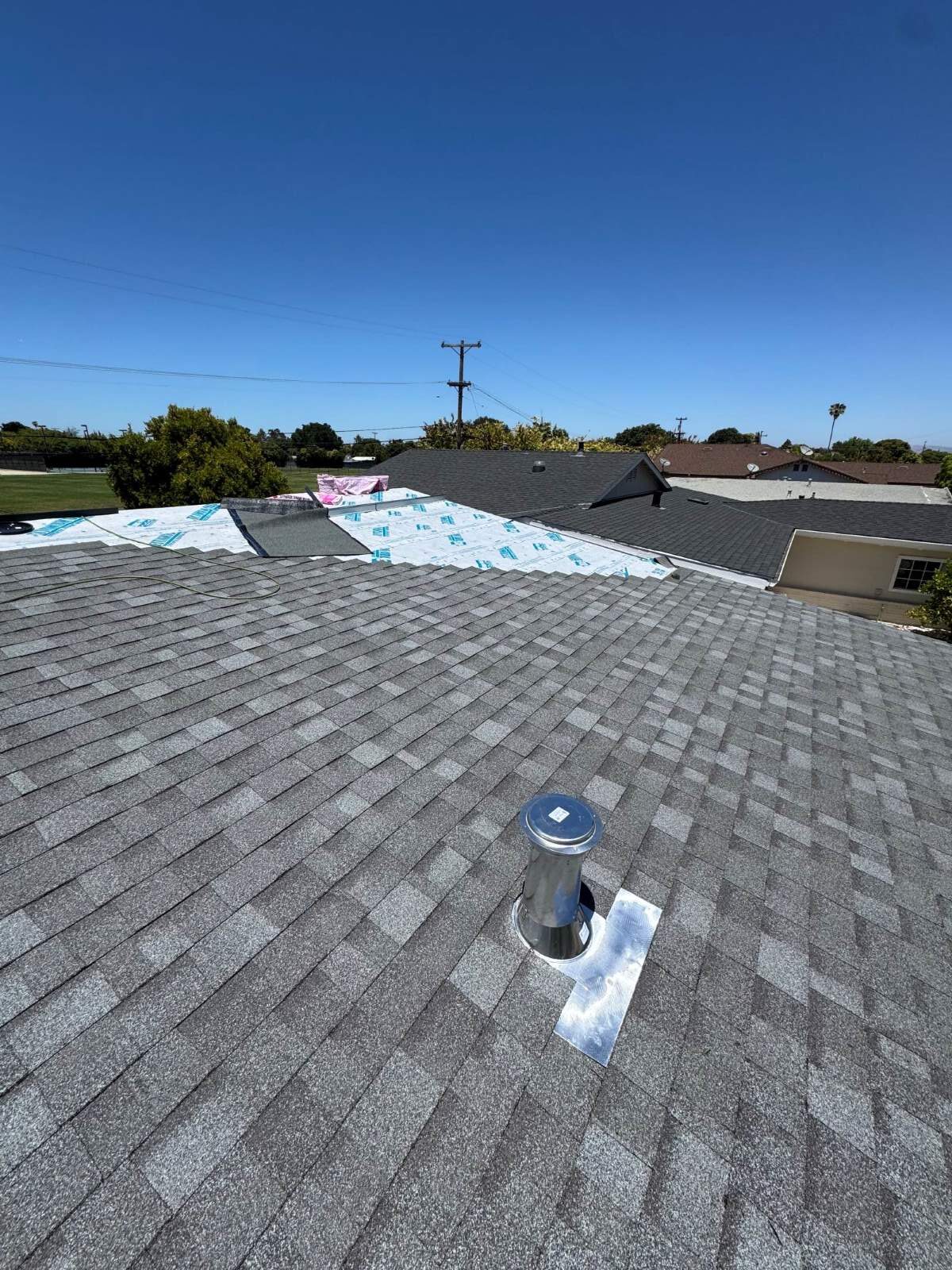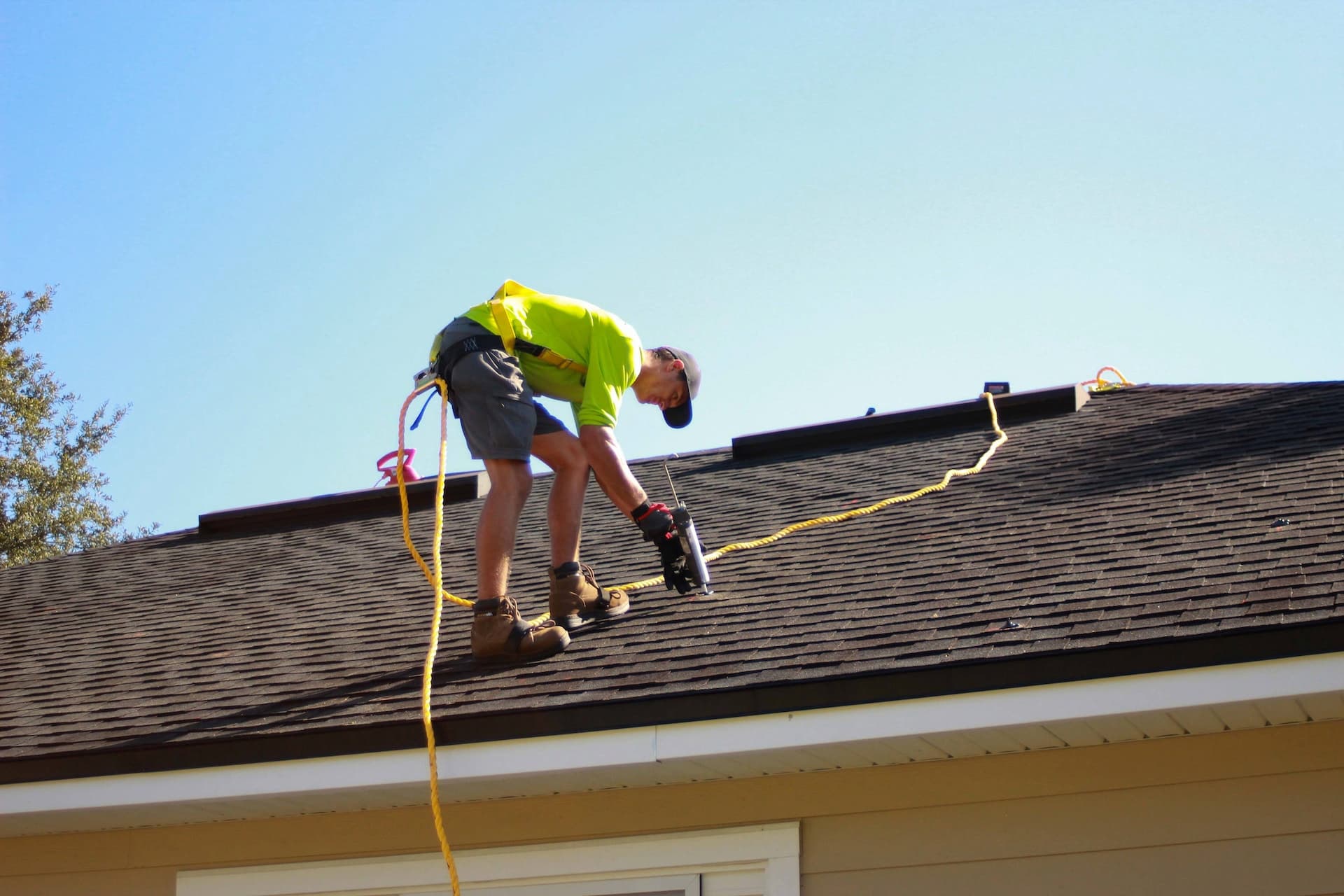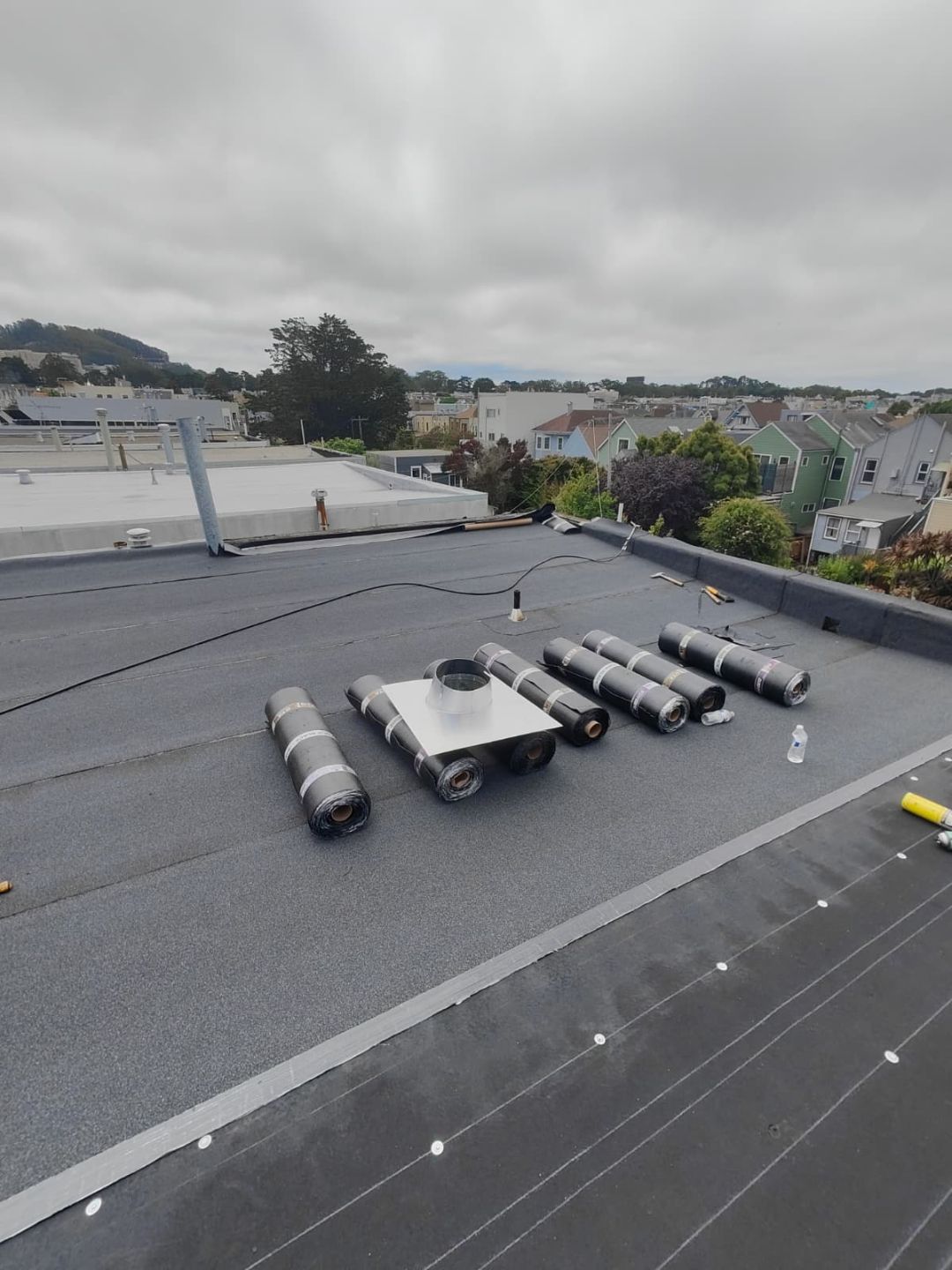Your roof keeps your home dry and structurally sound, but over time, it can wear down due to age, materials, or previous damage. One of the most common questions homeowners ask is: should I repair or replace my roof?
Making the right call between roof repair vs replacement isn’t always simple. Costs, timing, long-term durability, and the condition of your current roof all play a role. Continue reading to learn more about roof repair and replacement costs, the average prices for common roofing materials, when a full roof replacement vs repair makes the most sense, and more!
Disclaimer: The following information is for educational purposes only and is based on general research and data. Actual costs may vary depending on your specific situation. For accurate estimates tailored to your home, please contact Top Home Roofers.

How Much Does a Roof Replacement Cost?
Replacing a roof is a major investment. Californians can expect to pay anywhere between $5,000 and $16,000 for a roof replacement project. Expenses vary however depending on the complexity of the project, the size of your roof, and the materials used.
- Low-end range: $5,000-$6,000 for smaller homes using asphalt shingles.
- High-end range: $15,000-$16,000 for large homes using premium materials like slate or metal.
- Average cost: Around $10,000 for an average size home using wood shingles or shakes.
Roofing Materials and Costs
The type of roofing material you choose to install will significantly impact your total costs. Let’s look at the average prices for some of the most common roofing materials:
Asphalt shingles: $1-$4 per square foot
Asphalt shingles are the most common roofing material. They are known for easy installation, low costs, and decent durability, typically lasting 15 to 30 years with minimal maintenance.
Metal roofing: $8-$16 per square foot
Metal roofs are more expensive upfront but offer excellent durability, weather resistance, and energy efficiency, often lasting 40 to 70 years with proper installation and minimal upkeep.
Wood shingles: $4-$9 per square foot
Wood shingles are known for their clean, natural aesthetic and moderate durability over time. They require regular maintenance and are best suited for dry climates to avoid mold or rot.
Wood shakes: $6-$14 per square foot
Wood shakes offer a rustic appearance given they are very textured and thick. They’re also more durable than wood shingles but require higher maintenance and care.
Concrete tile: $10-$20 per square foot
Concrete tiles are incredibly long-lasting and durable, often holding form for over 50 years. They’re resistant to fire and keep away pests but are heavy and require reinforced roof framing.
Clay tile: $10-$18 per square foot
Clay tiles resist salt, fire, and rot. This roofing material is extremely durable, lasting anywhere from 50 to 100 years with proper maintenance. Clay tiles are ideal for roofs in hot, dry, or coastal climates, perfect for California!
Slate shingles: $10-$30 per square foot
Slate is a premium roofing option known for its elegant look and exceptional longevity, often lasting 75 to 100 years. It is heavy however and requires expert installation.
If you’re comparing old roof vs new roof costs, these material choices can heavily influence the direction you take.
Factors that Impact Roof Repair and Replacement Costs
When weighing roof restoration vs replacement, several details can impact how much you pay, including:
When comparing roof repair vs roof replacement, thinking beyond the initial bill and considering long-term value can often guide you down the more suitable route for you!


Roof Repair Costs
When comparing metal vs asphalt roof costs, asphalt is the more affordable option. Asphalt shingles cost anywhere between $4 to $8 per square foot, which means the average price to replace a 1,000 square foot roof with asphalt materials is $6,000.
Conversely, metal roofing costs between $4.50 and $16 per square foot. Though metal roofing costs more upfront, you will save in the long run because of its longevity and the little maintenance required for upkeeping. You can also save up to 25% in energy costs if solar reflective coating is used when installing, optimizing ventilation.
Average Costs Per Repair Level
Low-End Repairs
Cost: $150-400
What It Covers: Patching small leaks, resealing vents, or replacing a few damaged shingles. Quick fixes that don’t require major labor or materials.
Mid-range repairs
Cost: $500-1000
What It Covers: Repairing flashing, replacing underlayment in a localized area, or fixing moderate water damage. More complex than surface repairs but still contained.
High-End Repairs
Cost: $1,500 – $3,000+
What It Covers: Storm-related damage, sagging areas, structural issues, or partial roof restoration. Labor-intensive work that may need specialized materials or permits.
Repair vs Replace Roof Shingles
If only a few shingles are cracked, curling, or missing, it’s often cheaper to replace those shingles than tear off the entire roof. It’s not always necessary to replace your roof, especially if it’s relatively new (under 10 years old) and otherwise in good shape. Simply repairing those shingles that have been compromised is a lot less work and will save you money from a full roof replacement.


Can A Roof Be Repaired Instead Of Replaced?
Yes, in many cases a roof can be repaired instead of fully replaced. Choosing roof repair over replacement makes sense when the damage is limited to a small area, the roof is less than 10 years old, leaks are not ongoing, and the overall structure is still sound.
However, if the roof has widespread issues, repeated leaks, or is nearing the end of its lifespan, replacement is usually the better and longer-lasting option.
Roofing Repair or Replacement: What’s Involved?
Understanding the process of roof repair vs roof replacement can help you plan accordingly. We have outlined the steps required in both roof repair and roof replacement projects.
For Roof Repairs
- Step 1 – Inspection: A professional of ours examines the damaged area(s).
- Step 2 – Estimate: You receive a repair cost based on material and labor.
- Step 3 – Repair Work: Shingles or flashing are replaced, leaks sealed, and water barriers reinforced.
- Step 4 – Cleanup & Final Check: The area is cleaned and tested for water resistance.
For Roof Replacement
- Step 1 – Full Inspection & Quote: The whole roof is assessed, and a full quote provided.
- Step 2 – Tear-Off: Old shingles and underlayment are removed.
- Step 3 – Repair Decking: Any damaged roof decking is replaced.
- Step 4 – Install New Layers: Underlayment, drip edge, flashing, and shingles are installed.
- Step 5 – Final Inspection: A Top Home Roofer will inspect everything for accuracy and safety.
Final Thoughts
When debating to repair or replace a roof, the extent of the damage, your budget, and the age of your roof are important factors to consider. While a repair might save you money now, a full replacement may be the more economical option long-term if your roof is old or deteriorating.
At Top Home Roofers, we’ve helped many homeowners in San Jose assess whether it’s time to repair or replace roof shingles. We offer honest evaluations, clear pricing, and high-quality service from start to finish. If you think your aging roof needs a checkup, contact Top Home Roofers today to schedule a no-obligation inspection and quote.
FAQs
Should I repair or replace my roof?
Choosing to repair or replace a roof depends on the condition and age of your roof. If your roof is no more than a decade old and there is minor damage like a few curled shingles, repair will work. If the roof is aging however or the damage is extensive, replacement may be better.
Roof repair vs roof replacement: what’s the difference?
Roof repairs involve fixing isolated issues like leaks or damaged shingles whereas roof replacement projects involve removing the entire existing roof and installing a new one. When replacing a roof, the cost, time, and scope of work are much greater.
When should you repair a roof?
If your roof has limited damage, costs are manageable, and the rest of the roof is in solid condition, repairs will most likely do! Minor problems such as small leaks, missing shingles, and slight flashing issues are all repairable.
When to replace a roof?
The general rule of thumb is to replace your roof every 15 to 20 years.
Things to consider when replacing a roof are the age, condition, and performance of your current roof.
If it’s over 20 years old, leaking in multiple areas, or showing signs of structural damage, it’s usually time to replace it. Replacing a roof early can help avoid interior damage and higher costs down the road.Do I have to leave when my roof is being repaired?
No! You can be home during roof repair or roof replacement. Please be mindful that there will be noise and vibrations during the process. It’s 100% safe to stay inside, though some homeowners prefer to be away during the loudest work. Pets and children may be more comfortable elsewhere.

